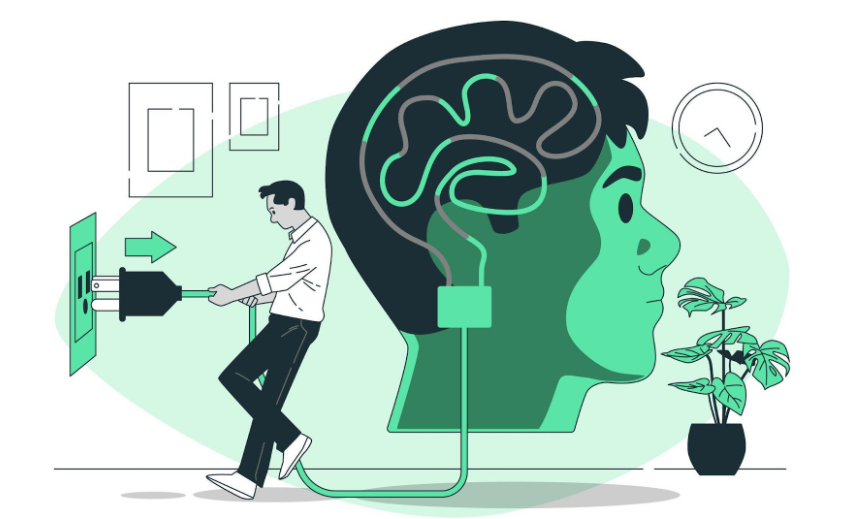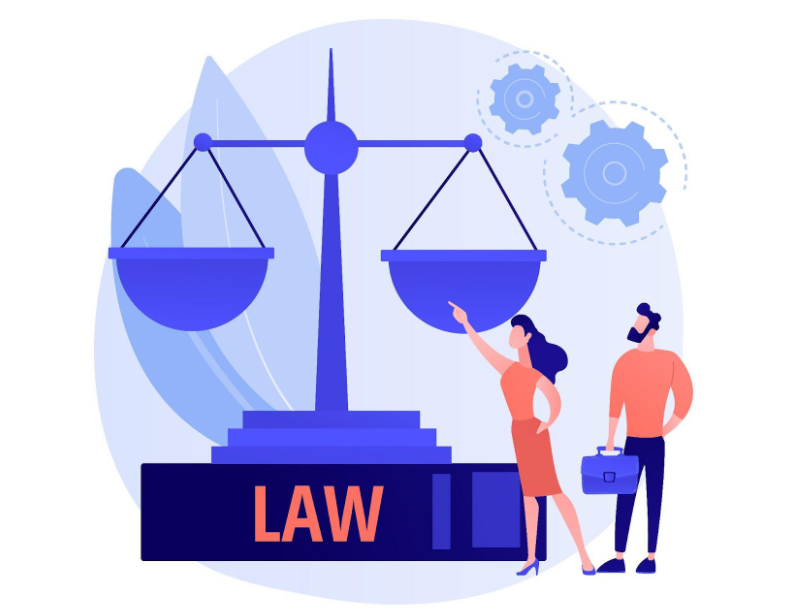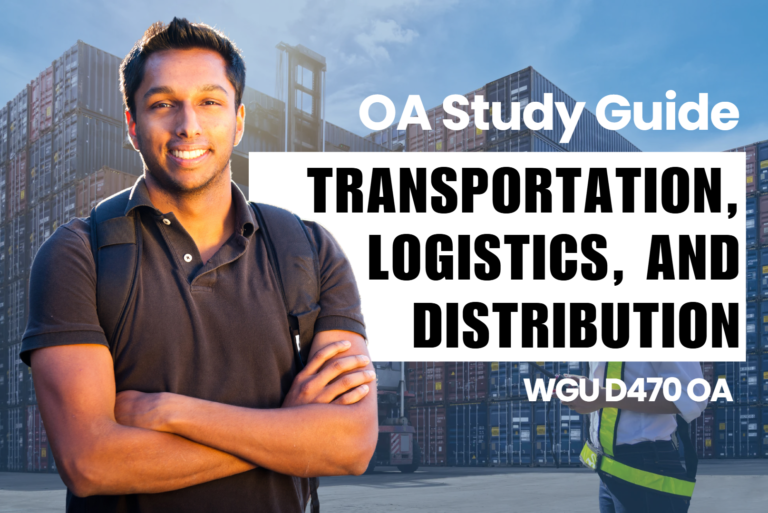WGU D357 OA Study Guide - 2025 | Embracing Diversity, Equity, and Inclusion 📖
Trying to understand Diversity Equity and Inclusion often becomes as tough as untangling headphone wires until you give up. You experience fulfillment when you solve headphone issues so learning about DEI brings you similar rewards. Building an inclusive space requires high priority.
Through this article, we examine three key DEI components that guide us toward worldwide inclusivity.
- Unconscious Bias and Its Impact on Decision-Making: Unconscious bias refers to automatic, unintentional stereotypes that affect judgments. Recognizing and addressing these biases is crucial for fair hiring, promotions, and workplace interactions.
- Developing and Implementing DEI Strategies: Successful DEI strategies involve policy development, leadership commitment, employee training, and inclusive hiring practices to foster a diverse and equitable workplace.
- Legal and Ethical Considerations in DEI: Organizations must comply with anti-discrimination laws (such as EEO and ADA) while upholding ethical responsibilities to create an inclusive, respectful, and diverse work environment.
We are here to explain concepts covered in the WGU D357 course to you and help you design more inclusive spaces for your workplace, classroom, and community. Our guide takes you through each subject area in detail using practical methods while showing you how to generate essential results. Join me as we explore the interesting details of DEI by starting our learning journey with a hot cup of coffee.
How to Use This Guide for the WGU D357 OA Exam?📝
The D357 Diversity, Equity, and Inclusion OA exam at WGU evaluates your understanding of bias awareness, DEI strategy development, and legal and ethical standards in workplace diversity. This guide simplifies the key concepts of unconscious bias and its impact on decision-making, developing and implementing DEI strategies, and legal and ethical considerations in DEI to help you grasp the topics tested in the exam.
We also provide exam-style questions and practical applications to ensure you’re fully prepared for the questions on the WGU D357 OA exam.

Unconscious Bias and Its Impact on Decision-Making For D357 OA 📝
Your mind automatically forms instant opinions about situations while you stay unaware of the reasons behind them. Everyone experiences this natural reaction from unconscious prejudices. Our minds automatically respond to subconscious stereotypes during decision-making. Our subconscious biases grow from basic distinctions about individuals based on race, gender, age, and other features while shaping what we observe and how we relate to everything. Our analysis will explain what unconscious bias looks like and show various bias types and their effect on decision-making methods plus ways to handle this issue effectively.
What is Unconscious Bias?
Our brains process information quickly using past habits and society’s expectations plus our own culture to decide things. When biased thoughts happen unintentionally they remain hidden from conscious awareness. Your brain automatically judges someone younger as tech-maxed-up while seeing older adults as bad at computers. Our minds form automatic connections that lead us to make unfair judgment calls.
You are not a bad person just because you have an unconscious bias. Our brain uses quick routes to interpret data faster than conscious thought. These helpful solutions assist in some cases though regularly make errors and maintain stereotypes as results.
Types of Unconscious Bias
Unconscious bias can take many forms. Here are some common types:
- Affinity Bias: Our bias pushes us to choose people who share our life backgrounds or passions. You favor someone for a role because they graduated from your alma mater. When managers favor people who resemble them they reduce workplace diversity by denying chances to others.
- Confirmation Bias: Looking for information that supports what we already believe and ignoring evidence that contradicts it. Imagine assuming someone is untrustworthy and interpreting their actions in a way that reinforces your belief. This can prevent us from seeing the full picture and making informed decisions.
- Attribution Bias: Judging others based on stereotypes or personal biases. For example, attributing someone’s success to luck instead of their hard work. This type of bias can undermine fair recognition and reward systems.
- Gender Bias: We tend to understand people’s work and skills through their gender background. When people assume that men lead better than women or that women focus better on family work. Gender discrimination creates permanent damage to career development paths and available opportunities.
- Halo Effect: A single favorable trait obscures our perception of other qualities. People often think someone who speaks well is also skilled and brilliant overall. We tend to exaggerate someone’s talents when we have little actual information about them.
How Unconscious Bias Affects Decision-Making
Our decisions become biased without our awareness and lead to unfair consequences. Here’s how it happens:
- In the Workplace: A manager might unconsciously favor employees who share their cultural background, leading to biased hiring, promotions, and evaluations. For instance, a woman’s ideas might be overlooked while the same suggestions from a male colleague are praised. This not only affects individual careers but also the overall fairness of the workplace environment.
- In Education: Teachers might unknowingly call on students who remind them of themselves or have lower expectations for students from certain backgrounds. This can lead to unequal opportunities and affect students’ confidence and performance. For example, research shows that students from marginalized groups often face lower academic expectations.
- In Everyday Interactions: Our everyday judgments about who to trust and work with arise from our unspoken beliefs. People build their personal connections and career paths through repeated small decisions.
Unconscious bias works both for and against individuals while keeping the unfairness of broad patterns in place. When we display preferences for particular groups it strengthens social divisions that already exist in our community. We must fight these biases now to achieve complete fairness for everyone.
Strategies to Mitigate Unconscious Bias
Awareness and proactive steps can help reduce the impact of unconscious bias. Here’s how:
- Awareness Training: Recognizing that everyone has biases is the first step. Diversity, equity, and inclusion (DEI) workshops can help individuals identify and reflect on their biases. These sessions often include activities to uncover implicit associations and understand their consequences.
- Structured Decision-Making: Implementing standardized processes, such as using the same set of interview questions for all candidates, can reduce bias in hiring and evaluations. Standardization ensures that everyone is assessed based on the same criteria, minimizing subjective judgments.
- Diverse Teams: When you bring together people from diverse backgrounds in your decision-making teams you gain different views to consider. Diverse teams are more effective at finding and correcting unfair rating practices.
- Open Discussions: Creating a culture where people can openly discuss bias and its effects fosters understanding and change. Encouraging dialogue helps individuals feel supported in addressing these challenges together.
- Inclusive Policies: Organizations should develop policies that actively reduce bias, such as blind recruitment practices where identifying information is removed from resumes. This helps ensure that candidates are judged solely on their qualifications.
- Continuous Learning: Addressing unconscious bias is not a one-time effort. Regular training, self-reflection, and feedback are essential to fostering long-term change.
Importance For the D357 OA
You need to recognize and fix hidden biases to establish fair spaces. Our lives are shaped by hidden biases whether we see them or not. When people and organizations identify and manage their biases they help build a system based on equality to create a better world. As a student preparing for WGU’s D357 course or a professional who wants better workplace results, you must tackle unconscious bias first to make lasting improvements.
We gain useful results when we take action to counter our hidden biases. Companies that welcome diverse hires alongside inclusive workplace cultures perform better while their employees become more creative and solve problems better. Our efforts to make everyone feel valued and included bring us both moral results and create paths for innovation and achievement.
Developing and Implementing DEI Strategies For D357 OA 📝
True DEI standards need to be implemented in organizations to provide a welcoming place for all team members. Our exploration will start by defining basic DEI concepts before going into specific practical actions you can take to build successful inclusion strategies.
Understanding DEI Fundamentals
Before diving into strategies, it’s important to understand what DEI means:
- Diversity: Groups and settings must contain various kinds of individuals. When discussing DEI the team considers aspects like race, gender, age, ethnicity, sexual orientation, and abilities. We need to have various viewpoints reflect each other within our group or setting.
- Equity: Equity is about fairness—giving everyone what they need to succeed. It involves recognizing that not everyone starts from the same place and taking steps to eliminate barriers.
- Inclusion: Every organization should build spaces where everyone feels important and has chances to make positive contributions. The actual work that brings diversity to life is what makes it succeed.
Organizations can start real change efforts by learning about these three important areas.
Why DEI Matters
DEI initiatives are vital for fostering inclusive and equitable environments. In educational settings, for instance, DEI strategies can:
- Enhance student engagement by making everyone feel seen and valued.
- Address systemic inequalities that may exist within institutions.
- Promote better learning outcomes by incorporating diverse perspectives into curricula and teaching practices.
Incorporating DEI principles isn’t just about fairness; it’s about leveraging the full potential of a diverse community.
Steps to Develop DEI Strategies
Developing a successful DEI strategy involves thoughtful planning and execution. Here’s how to get started:
- Assess Current Practices:
- Conduct a needs assessment to identify gaps in diversity and inclusion. Surveys, focus groups, and data analysis can help pinpoint areas for improvement.
- Conduct a needs assessment to identify gaps in diversity and inclusion. Surveys, focus groups, and data analysis can help pinpoint areas for improvement.
- Set Clear Goals:
- Outline your success path by making clear Specific Measurable Achievable Relevant and Time-bound targets. We will make underrepresented groups represent 20% of our senior leader positions during the next 2 years.
- Outline your success path by making clear Specific Measurable Achievable Relevant and Time-bound targets. We will make underrepresented groups represent 20% of our senior leader positions during the next 2 years.
- Secure Leadership Buy-In:
- DEI efforts require support from the top. Leaders should not only endorse these initiatives but actively participate in and champion them.
- DEI efforts require support from the top. Leaders should not only endorse these initiatives but actively participate in and champion them.
- Develop Policies and Practices:
- Update policies to reflect DEI priorities. This could include creating anti-discrimination policies, revising hiring practices, and ensuring equitable promotion criteria.
- Update policies to reflect DEI priorities. This could include creating anti-discrimination policies, revising hiring practices, and ensuring equitable promotion criteria.
- Train and Educate:
- Provide ongoing training on topics like unconscious bias, cultural competency, and inclusive practices. These sessions help build awareness and equip individuals with the tools to foster inclusivity.
Implementing DEI Strategies
Once a plan is in place, it’s time to put it into action. Here are some steps to ensure effective implementation:
- Foster an Inclusive Culture:
- Organize events that help everyone talk about diversity and inclusion practices. Establish areas for everyone to discuss and exchange their observations and views without concern.
- Organize events that help everyone talk about diversity and inclusion practices. Establish areas for everyone to discuss and exchange their observations and views without concern.
- Incorporate Intersectionality:
- Everyone has diverse social categories including race, gender, and social status which impact how they live their life. Your knowledge helps you develop strategies that address needs better.
- Everyone has diverse social categories including race, gender, and social status which impact how they live their life. Your knowledge helps you develop strategies that address needs better.
- Create an Inclusive Curriculum:
- Develop educational materials that reflect diverse perspectives and histories. For example, include works by authors from underrepresented groups and address a broad range of cultural contributions.
- Develop educational materials that reflect diverse perspectives and histories. For example, include works by authors from underrepresented groups and address a broad range of cultural contributions.
- Address Bias and Microaggressions:
- Train individuals to recognize and address both explicit and implicit biases. Create mechanisms for reporting and addressing microaggressions within the organization.
- Train individuals to recognize and address both explicit and implicit biases. Create mechanisms for reporting and addressing microaggressions within the organization.
- Engage the Community:
- Partner with local organizations to extend DEI efforts beyond the classroom or workplace. Encourage community members to participate in initiatives that promote diversity and equity.
Measuring and Refining DEI Strategies
Evaluation is critical to the success of DEI initiatives. Here’s how to measure progress and make necessary adjustments:
- Establish Metrics:
- Define clear indicators to measure the impact of DEI strategies. These could include representation data, retention rates, and feedback from stakeholders.
- Define clear indicators to measure the impact of DEI strategies. These could include representation data, retention rates, and feedback from stakeholders.
- Collect Feedback:
- Create channels for continuous feedback from students, employees, and community members. Use this input to identify areas for improvement.
- Create channels for continuous feedback from students, employees, and community members. Use this input to identify areas for improvement.
- Adapt and Improve:
- Treat DEI as a dynamic process. Regularly review outcomes and adjust strategies to address emerging challenges and opportunities.
Legal and ethical standards guide DEI strategies by making sure organizations follow Title IX rules against sexual discrimination in education and treat everyone with their rights and dignity. These official guidelines protect businesses from legal problems while making their environments more inclusive. When institutions follow these rules they develop safe spaces where everyone gets equal respect and acceptance.
Importance For the D357 OA
Building and applying DEI strategies takes dedicated work with self-assessment plus betterment every step of the way. Organizations can develop environments that benefit everyone when they put principles of diversity equity and inclusion into action. The paths outlined here benefit people who take WGU D357 classes alongside those doing DEI work outside of school.
Tired of reading blog articles?
Let’s Watch Our Free WGU D357 Practice Questions Video Below!

Legal and Ethical Considerations in DEI For D357 OA📝
Business diversity, inclusion and equity succeed when organizations create their initiatives according to the rules of law and ethics. Learning about both legal and moral rules helps organizations build spaces where everyone’s rights stand protected. This section explains the laws and morals that define DEI practices and suggests what companies need to do to meet both compliance and inclusion standards.
Key Legal Frameworks for DEI
Numerous laws ensure that diversity, equity, and inclusion practices are legally sound. Here are some foundational legal frameworks:
- Title VII of the Civil Rights Act of 1964:
- Prohibits discrimination based on race, color, religion, sex, or national origin in employment decisions. It is a cornerstone of anti-discrimination laws.
- Prohibits discrimination based on race, color, religion, sex, or national origin in employment decisions. It is a cornerstone of anti-discrimination laws.
- Age Discrimination in Employment Act (ADEA) of 1967:
- Protects individuals aged 40 and older from age-based employment discrimination.
- Protects individuals aged 40 and older from age-based employment discrimination.
- Title IX of the Education Amendments of 1972:
- Federal assistance programs must serve both males and females equally through their basic educational services.
- Federal assistance programs must serve both males and females equally through their basic educational services.
- Americans with Disabilities Act (ADA):
- The ADA ensures that organizations have to provide job-related assistance and disability protection extends to both jobs and educational settings.
- The ADA ensures that organizations have to provide job-related assistance and disability protection extends to both jobs and educational settings.
- Section 504 of the Rehabilitation Act of 1973:
- Programs getting federal support must treat people with disabilities fairly.
- Programs getting federal support must treat people with disabilities fairly.
- Brown v. Board of Education (1954):
- The highest US court decided in 1954 racial separation in public schools violated the Constitution’s principle of fairness in learning places.
Legal standards make up our DEI strategies to secure equal rights and opportunities for everyone.
Ethical Considerations in DEI
Ethics go beyond compliance, emphasizing the moral responsibility to create truly inclusive spaces. Key ethical principles include:
- Non-Discrimination:
- DEI strategies must integrate non-discrimination policies, ensuring fairness and avoiding misinterpretation.
- DEI strategies must integrate non-discrimination policies, ensuring fairness and avoiding misinterpretation.
- Inclusion:
- Organizations have an ethical obligation to create environments where all individuals feel welcomed, valued, and respected.
- Organizations have an ethical obligation to create environments where all individuals feel welcomed, valued, and respected.
- Intersectionality:
- Ethical DEI practices recognize how overlapping social identities (e.g., race, gender, class) affect individuals’ experiences. This understanding informs policies that address nuanced needs.
- Ethical DEI practices recognize how overlapping social identities (e.g., race, gender, class) affect individuals’ experiences. This understanding informs policies that address nuanced needs.
- Transparency:
- Open communication about DEI goals, progress, and challenges fosters trust and accountability.
By prioritizing these ethical principles, institutions can build trust and promote genuine inclusivity.
Challenges and Evolving Legal Landscape
The legal landscape for DEI is dynamic, influenced by court rulings and policy changes. For example:
- Affirmative Action:
- Recent challenges to affirmative action policies highlight the ongoing debate around achieving diversity while ensuring merit-based practices.
- Recent challenges to affirmative action policies highlight the ongoing debate around achieving diversity while ensuring merit-based practices.
- State-Level Restrictions:
- Some states have enacted laws limiting discussions around DEI topics, such as critical race theory. Navigating these restrictions requires careful planning to balance compliance with inclusivity.
By staying informed about these developments, organizations can adapt their DEI strategies to meet new legal requirements while upholding their commitment to equity.
Importance For the D357 OA
Sound ethical principles and laws need to underlie all good DEI methods. Rules for working with diversity help institutions build spaces that honor different identities while giving everyone fair chances to participate. You and other students preparing for WGU D357 OA plus professionals can use this knowledge to lead DEI projects effectively.
Tired of reading blog articles?
Let’s Watch Our Free WGU D357 Practice Questions Video Below!

Wrapping It Up: Your DEI Toolkit for Success (WGU D357 OA)📄
Implementing Diversity Equity and Inclusion (DEI) delivers practical methods that help build just and open spaces. Our learning about unconscious bias methods combined with strategy development and ethical standards helps us produce real positive results.
Students who study for WGU D357 OA must learn these DEI fundamentals. Your ability to use these principles in real-world situations will be tested so you should invest in solidifying your DEI knowledge base. Analyze methods to spot prejudice and create fair rules plus confirm you stick to ADA and Title VII legal requirements.
Learning beyond tests helps you succeed personally in your daily life. Through your knowledge of DEI matters you can create positive effects wherever you lead or learn. Good luck with your WGU D357 OA! After learning these concepts you must start implementing them to create positive change in society.






